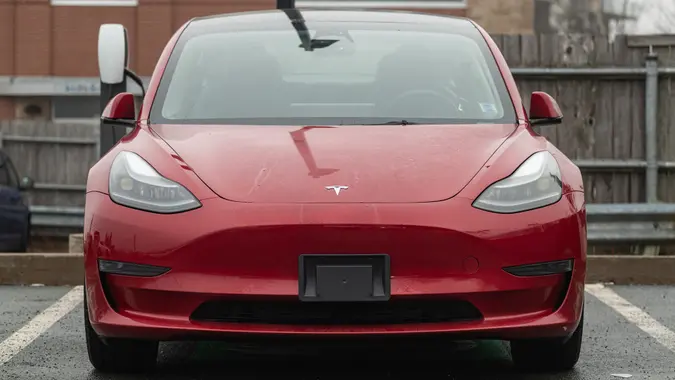Car Features That Costs Retirees the Most Over Time, According to Car Experts

Commitment to Our Readers
GOBankingRates' editorial team is committed to bringing you unbiased reviews and information. We use data-driven methodologies to evaluate financial products and services - our reviews and ratings are not influenced by advertisers. You can read more about our editorial guidelines and our products and services review methodology.

20 Years
Helping You Live Richer

Reviewed
by Experts

Trusted by
Millions of Readers
Anyone who owns a car knows that it costs you money right and left, between gas, insurance, repairs and regular maintenance. If you are a retiree living on a fixed income, you can’t afford to go over budget on a car, especially if there is one aspect of the vehicle that can put a dent in your wallet. GOBankingRates reached out to several car experts and they shared the below car features that costs retirees the most over time.
Also here are some car costs to cut out and save thousands.
Sunroofs
The features that really hurt retirees over time aren’t the flashy options you’d expect, according to Dale Gillespie, chief operating officer (COO) of DirectKia, it’s actually the ones that are expensive to repair once the warranty is gone, with panoramic sunroofs serving as the perfect example.
“When the seals fail or the mechanism jams, you’re looking at anywhere from $1,500 to $3,000 just to get it fixed,” Gillespie said. “I’ve even seen quotes north of $5,000 on certain luxury models.”
Paint
“The biggest thing I see for folks with cars on the older side is the paint, especially if they aren’t garaged,” explained Zach McFarlane, owner and CEO of Zach Wraps, adding that any clear coat will fade and chip away after so much time on the road. “It’s inevitable, but once rust sets in you’re looking at some serious bodywork that costs, which is why paint protection film and more recently wraps have become super popular, especially on higher-end cars.”
McFarlane admitted that this is more of an upfront cost but much cheaper than bodywork and a new paint job that would come in the next decade of ownership, particularly when considering the impact on the car’s resale value.
High-Tech Infotainment Screens
These systems are wonderful when they work, in Gillespie’s professional opinion, but once they’re out of warranty they can wipe out a fixed income in one repair bill, noting that an infotainment module in a seven-year-old Lexus can cost roughly $8,000 to replace.
Gillespie went on to explain that if retirees really want tech features in their car, it might be best to buy a certified pre-owned model so there is some protection when a big repair comes due.
Hybrid or EV Battery Packs
What retirees might save on gas with an electric vehicle (EV) could cost them more down the road when the hybrid or EV battery pack requires replacing. As an example, Gillespie pointed out how the replacement battery on an older Nissan Leaf is anywhere between $7,000 to $8,000.
“If you’re retired and on a limited budget the best option for your pocket are cars with fewer moving glass panels, less complicated electronics and proven drivetrains,” Gillespie added.
More From GOBankingRates
 Written by
Written by  Edited by
Edited by 

























